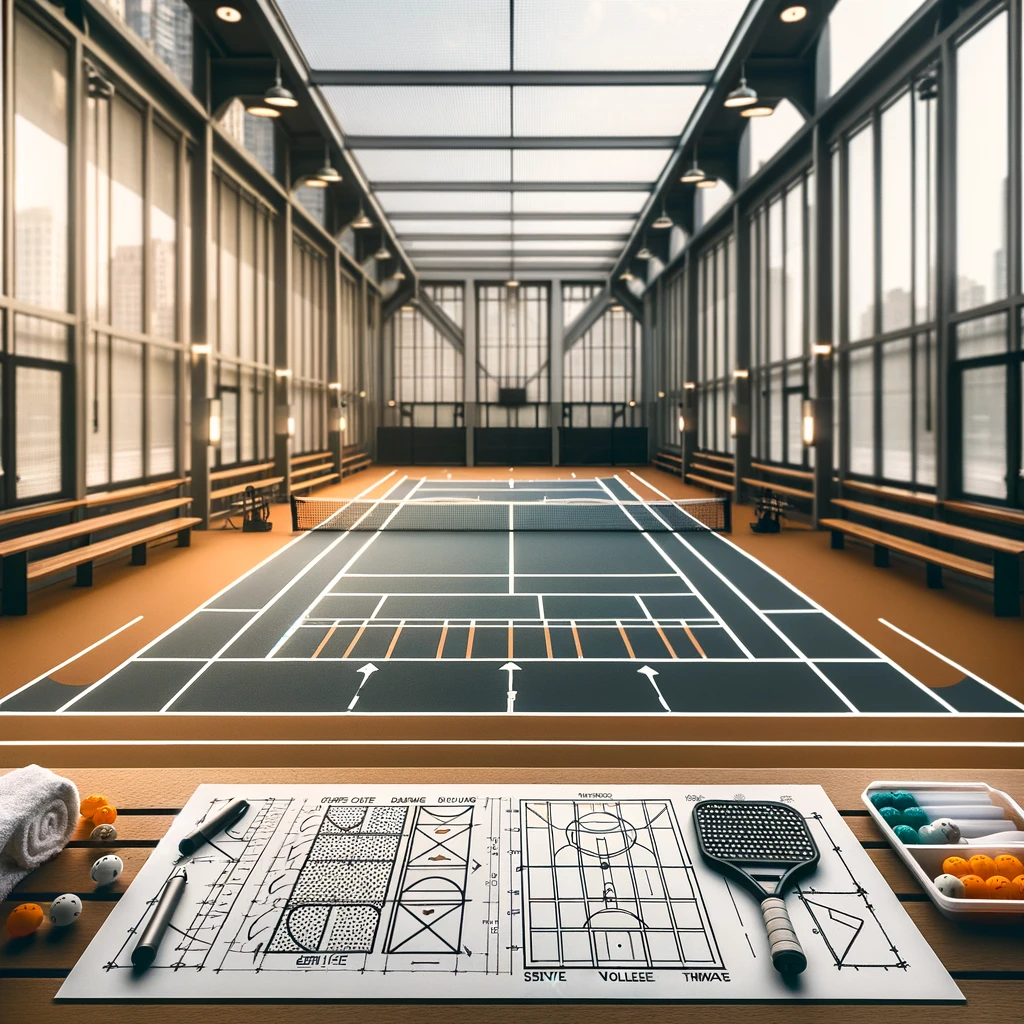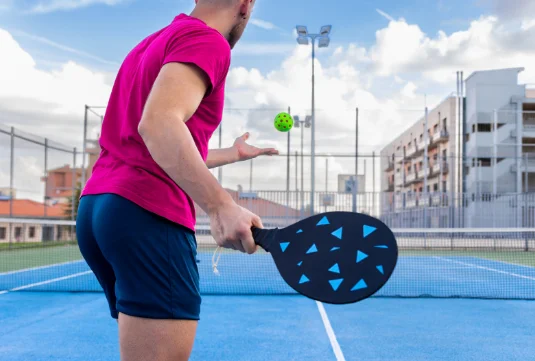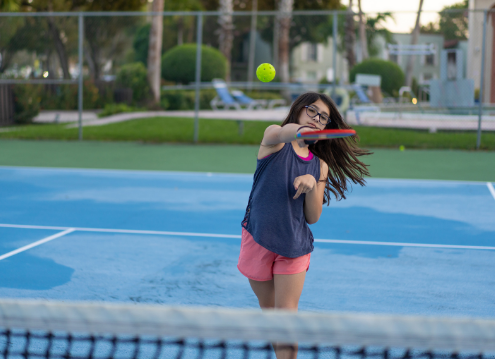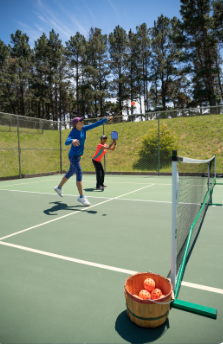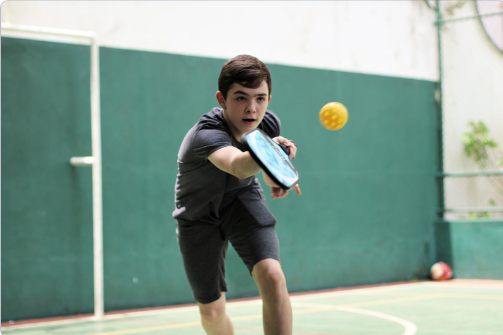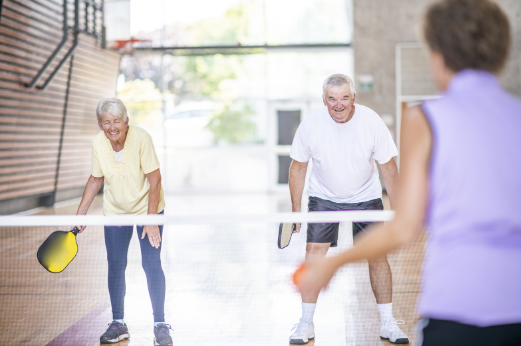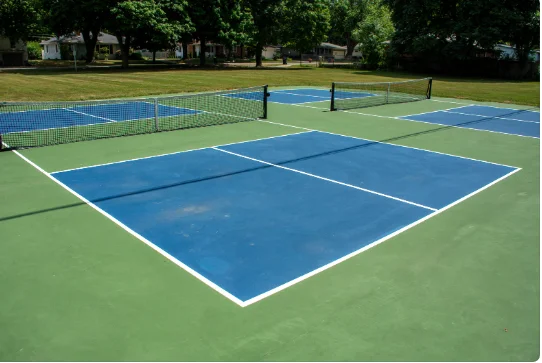Follow the Lines: Pickleball Court Layouts, Diagrams, and Templates
Pickleball, a sport that ingeniously blends elements of tennis, badminton, and table tennis, has witnessed a meteoric rise in popularity across various age groups and skill levels. This surge in interest is not just limited to leisure players; educational institutions, community centers, and sports facilities are increasingly embracing pickleball due to its accessibility and minimal equipment requirements. The essence of this sport lies not only in its playability but also in the intricacies of its court layout. Understanding the layout is crucial for both players and facilities to ensure a fair and enjoyable game.
Recognizing this need, our upcoming article delves deep into the world of pickleball court layouts. We aim to provide a comprehensive guide that covers every aspect of the court, from the baseline to the non-volley zone, commonly known as ‘the kitchen.’ This guide will feature detailed layouts, illustrative diagrams, and practical templates, catering to everyone from complete beginners to facility managers looking to set up or maintain a court. Whether you are planning to build a new court or want to understand the game better, this article promises to be an invaluable resource, outlining the key components that make up a pickleball court.
Understanding Court Markings and Zone
In the dynamic world of pickleball, understanding the court markings and zones is crucial for players of all levels. These markings, comprising service areas, the non-volley zone (or ‘kitchen’), and baselines, are pivotal in defining the gameplay and the rules associated with it. Our detailed guide, complemented by visual diagrams, aims to demystify these key components of a pickleball court, enhancing both your knowledge and gameplay.
The service areas, divided by the centerline, are critical for starting each rally. Knowing the exact dimensions and positions of these areas is essential for serving correctly and strategically. The non-volley zone, affectionately termed ‘the kitchen,’ is a unique aspect of pickleball. This area, extending 7 feet from the net on both sides, is a no-go zone for volleys, introducing a tactical layer to the game that emphasizes skill over power. Understanding the restrictions associated with the ‘kitchen’ is crucial for both offensive and defensive strategies.
Finally, the baselines serve as the rear boundary for serves and play. A correct grasp of baseline rules is key to avoiding faults and making effective plays. Our article, enriched with visual diagrams, provides an easy-to-understand breakdown of these zones, offering beginners and seasoned players a clearer insight into the strategic layout of a pickleball court. This knowledge is not just a pathway to improved skills, but also a deeper appreciation of the complexities and nuances of pickleball.
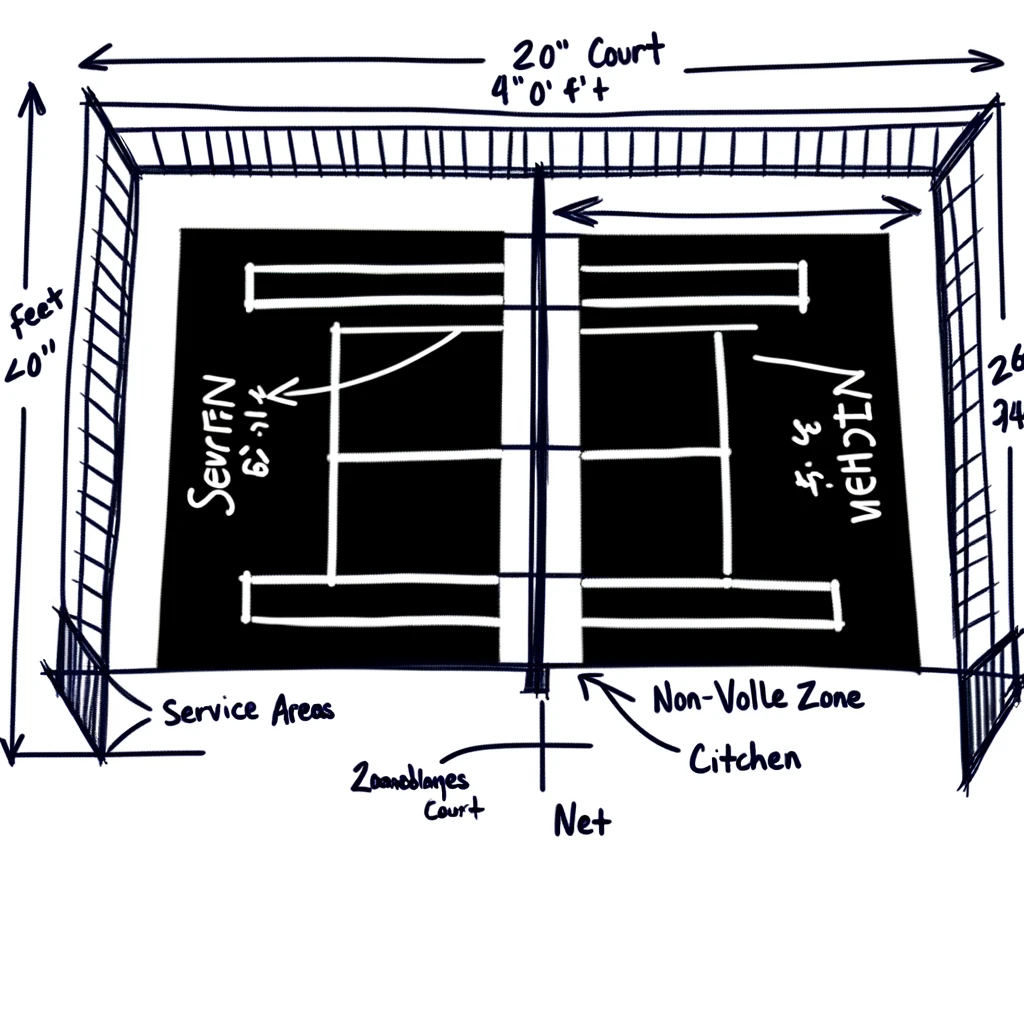
The Basics of Pickleball Court Dimensions
Pickleball, a sport rapidly gaining popularity, requires a specific court layout, and understanding the basic dimensions is vital for players, coaches, and facility managers. The standard pickleball court is a rectangle 20 feet wide and 44 feet long, a size that remains consistent for both singles and doubles play. This uniformity in dimensions simplifies the game’s logistics, making it easier for venues to accommodate both forms of play without needing adjustments.
The court is segmented into several areas, including the service boxes and the non-volley zone, also known as ‘the kitchen.’ Each half of the court is further divided into two equal sections, the left and right service areas. For official play, adherence to these measurements is crucial. Even a small deviation can significantly impact the game’s dynamics, affecting strategies and player movements.
Precise measurements are essential not only for fair competition but also for player training and development. Practicing on a court that meets official dimensions ensures that players’ skills are honed under conditions they will face in competitive play. For facility planners and builders, understanding and implementing these standards is key to creating an optimal environment for pickleball, catering to its growing community of enthusiasts. This detailed understanding of pickleball court dimensions plays a critical role in the sport’s integrity and enjoyment.
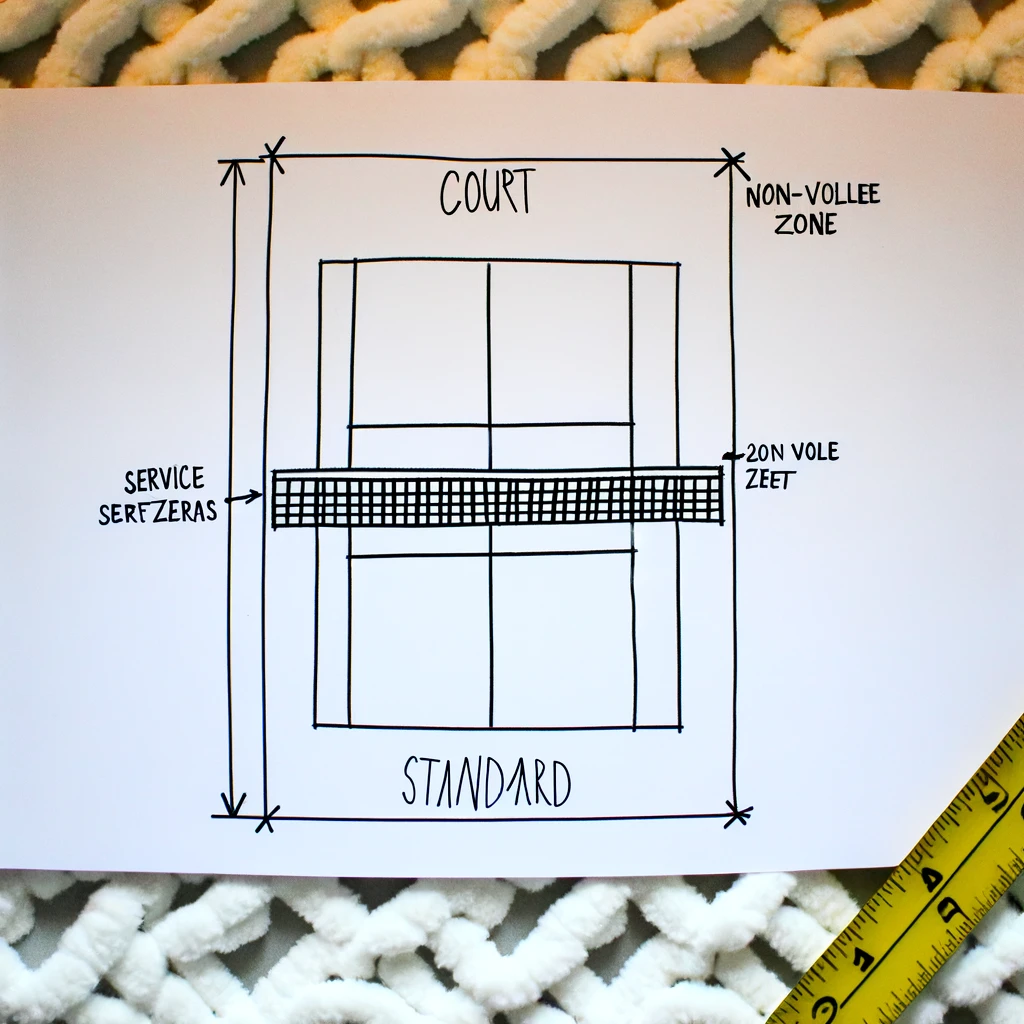
Templates for Easy Court Setup
In the realm of pickleball, setting up a court that adheres to official dimensions can be a daunting task. This is where pickleball court templates come into play, greatly simplifying the process. These templates are a godsend for players, coaches, and facility managers looking to establish or upgrade their pickleball courts with accuracy and ease. They are designed to provide a clear guide for marking out the standard court dimensions, including service areas, baselines, and the non-volley zone, commonly referred to as ‘the kitchen.’
The beauty of using templates lies in their ability to remove guesswork and ensure precision. With a well-designed template, laying out a pickleball court becomes a straightforward task that can be accomplished quickly and efficiently, ensuring that the court meets official size requirements for competitive play. This is especially beneficial for community centers, schools, and individuals looking to set up temporary or permanent pickleball courts in multi-use spaces.
Resources for obtaining these templates are abundant. They can be found online through various sports equipment suppliers and pickleball associations. Many websites offer downloadable templates that can be printed and used as a physical guide. Some suppliers even provide full court kits, including not just templates but also nets, posts, and line-marking tools. By utilizing these resources, setting up a pickleball court becomes an accessible and hassle-free process, encouraging the growth and spread of this enjoyable and inclusive sport.
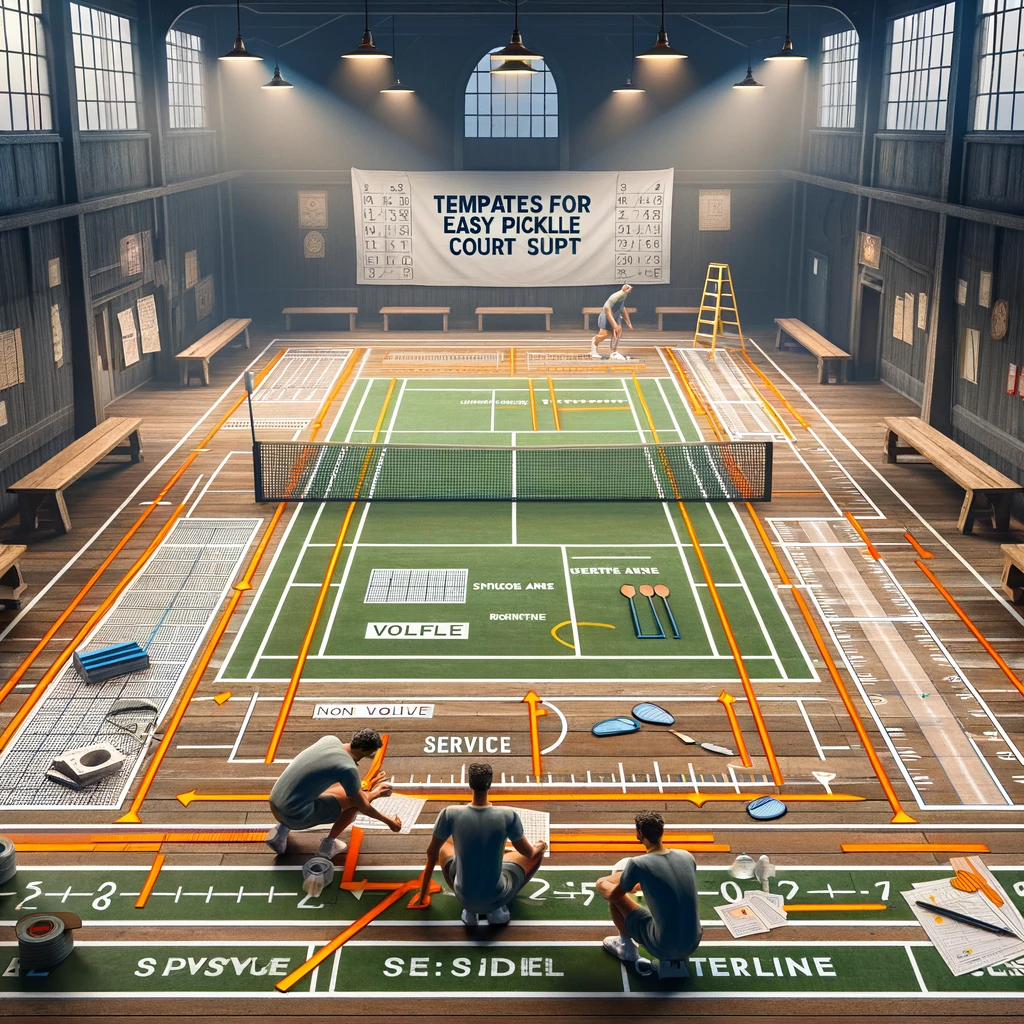
Customizing Your Pickleball Court
Customizing your pickleball court can open up a world of opportunities, particularly for non-official play, backyard enthusiasts, or those catering to children and beginners. While official pickleball courts have standard dimensions, there’s room for creativity and adaptation in more casual settings. Adjusting the size of the court can make the game more accessible and enjoyable, especially in confined spaces or when introducing the sport to new players.
For backyard or multipurpose courts, flexibility is key. In smaller spaces, reducing the court’s length and width proportionately can maintain the game’s integrity while fitting the available area. This customization is ideal for family games, where a full-sized court might not be feasible. Alternatively, temporary courts can be set up in driveways or on patios using portable nets and removable line markers, allowing for quick conversion of spaces into play areas.
When introducing pickleball to children or beginners, smaller courts are beneficial. They can be less intimidating and easier to manage, helping new players develop their skills without feeling overwhelmed. Lowering the net height slightly can also make the game more accessible for young players, ensuring that the sport is enjoyable and engaging for participants of all ages and skill levels. Customizing court dimensions in these ways not only tailors the game to various needs and environments but also promotes inclusivity and growth in the pickleball community.
Maintenance and Upkeep of Pickleball Court Lines
Maintaining and upkeeping pickleball court lines is crucial for a clear, safe, and enjoyable playing experience. Over time, court lines can fade due to weather exposure and the wear and tear of regular play, making them difficult to see and potentially affecting the game’s fairness and safety. Adhering to best practices in line maintenance is therefore essential for facility managers and private court owners alike.
For maintaining clear and visible court lines, regular inspection and timely repainting are key. It’s recommended to use high-quality, durable paint specifically designed for sports courts. This type of paint ensures longevity and resistance to weather elements, particularly in outdoor settings. The choice of color also matters; bright and contrasting colors improve visibility, essential for accurate play.
In terms of tools, using precision line marking equipment can significantly ease the process and ensure accuracy. These tools range from simple chalk liners to more advanced line painting machines, depending on the court’s size and the frequency of maintenance required.
Additionally, the impact of weather, like rain, snow, and extreme temperatures, can accelerate the degradation of court lines. Implementing preventive measures such as regular cleaning, sealing the surface, and avoiding water accumulation can prolong the life of the lines. By following these best practices and using the recommended materials and tools, pickleball enthusiasts can ensure their courts remain in top condition, offering an optimal playing experience year-round.
Conclusion
In conclusion, the proper layout of a pickleball court is not just a matter of following rules; it is central to ensuring fair play, enjoyment, and the overall integrity of the game. The dimensions and markings of the court dictate the flow and strategy of pickleball, making a correctly set up court essential for players to experience the game as it’s meant to be played. This guide, with its focus on court dimensions, markings, customization, and maintenance, aims to empower players, coaches, and facility managers with the knowledge to create optimal pickleball environments.
We encourage players and enthusiasts at all levels to utilize this information to enhance their pickleball experiences. Whether setting up a new court, maintaining an existing one, or simply seeking to understand the game better, these insights are invaluable.
As pickleball continues to grow in popularity, its future looks bright. The sport’s accessibility and appeal to a wide demographic make it more than just a passing trend. With the right infrastructure and understanding of the game’s technical aspects, pickleball is poised to become an enduring fixture in the sporting world. The continuous evolution and expansion of pickleball facilities will undoubtedly contribute to the sport’s growth and popularity, promising an exciting future for players and fans alike.
FAQs about Pickleball Court Layout and Maintenance
1. Why is the proper layout of a pickleball court important?
The layout of a pickleball court is crucial for fair play and enjoyment. The specific dimensions and markings influence the flow and strategies of the game, ensuring that players experience pickleball as it is intended.
2. How do the dimensions and markings of a pickleball court affect gameplay?
Dimensions and markings dictate the playing area, serving zones, and non-volley zone (kitchen). They are essential for enforcing rules and strategies, like where players can serve and when volleys are allowed.
3. Can I customize my pickleball court?
Yes, you can customize your court for non-official play or to suit smaller spaces, but be aware that it might affect gameplay. Customization is great for backyard courts or for introducing beginners and children to the sport.
4. What should I consider when maintaining my pickleball court?
Regular inspection and maintenance of court lines are important. Use durable, sports-specific paint and ensure that the surface is clean and free from damage. This helps in preserving the court’s integrity and safety.
5. How can this guide help new pickleball players or coaches?
This guide offers valuable insights into court setup, maintenance, and the technical aspects of the game, which are beneficial for understanding and teaching the sport effectively.
6. What is the future of pickleball as a sport?
Pickleball is rapidly growing in popularity due to its accessibility and wide appeal. With proper infrastructure and understanding of its technical aspects, it’s set to become a longstanding, popular sport. The expansion of pickleball facilities will further contribute to its growth and popularity.

